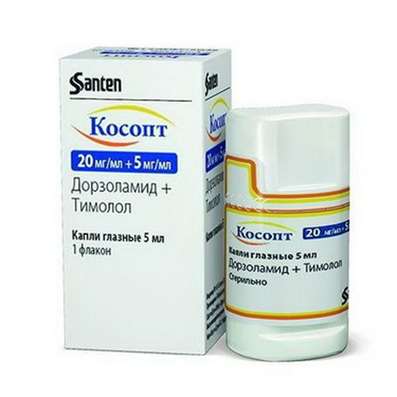Aging and carcinogenesis: the balance on the verge of foul
02 Nov 2016
What determines the cell death processes and any attempts existed prolonging cell life?
Yesterday, in the street an old woman came up to me and offered to buy the eternal needle primus.
You know, Adam, I did not buy. I do not want eternal needle, I do not want to live forever.
Ilf, Petrov "Golden Calf"

The very concept of life and death as those of a single cell and all multicellular structures, be it culture at the bottom of the Petri dish, the epithelium of land lining the lung, 959-cell nematode Caenorhabditis elegans or in the extreme case of a piece, it is quite a different meaning. For complex systems, to which we belong and we, the definition of "live - lifeless" formulated quite simple and is based on half a dozen signs, which all the students of biological faculties told during their first semester. It was only the presence of all of them together can be attributed to the object under study wildlife.
From the point of view of the physiology of these key attributes must have the ability to live an individual's metabolism and energy with the environment, which includes processes such as nutrition, respiration and excretion. From the biochemical point of view of a living system, perhaps it should be called the inside of which continue metabolic reactions and is supported by the constancy of its chemical composition. In the understanding of biophysicists lives - is the eternal struggle against entropy, or rather, the ability to maintain the level of disorder in the system below that of abroad. Genetics determines the living object as the one that has the ability to reproduce, making all the molecules, cells, tissues are similar in structure to its predecessors. From the perspective of embryology, life is meant as a final process of ontogenesis, since the state of a single-celled zygote and ending with the time when all the further changes and the acquisition of new properties are completed. And the quality of these changes, whether they rise to the accumulation of biomass, or, on the contrary, death of tissue, does not matter (that is, when you point to a growing bald spot, it is possible to smartly to parry the fact that, well, you do not grow old at all, and it can be said developing countries). Ethologists, in turn, put the cornerstone in the presence of a living object irritability or selective reaction to external stimuli. If you stick with, say, a common amoeba (Amoeba proteus) something sharp, it should be quite prudent to crawl away, but if, for example, to add Wednesday something nutritious, then, on the contrary, it will immediately begin to move along the concentration gradient of the nutrient towards its source. A similar experiment was, incidentally, excellent work, and sleep on a colleague, except that will have to poke some heavy thing, and the role of the attractive factor instead of the nutrient medium, in this case it is best to play the smell of freshly brewed coffee. The presence of such a selective reaction gives reason to believe that a living organism in front of us.
For a single cell, everything looks a little different. Let's start with the fact that the entire life cycle for it - it's just the time interval between two mitotic division and that any act of the birth of new cells is inextricably linked with the death of her predecessor. On the other hand, mitosis, already by nature presupposing full identity of two of the resulting daughter cells, de jure, it provides a kind of formal immortality. In reality, of course, everything is not so few, and naturally there are many factors that violate the right course of mitosis (try, for example, the treated cells with colchicine and see what happens). Even under normal conditions of varieties of cell division that leads to an uneven redistribution of genetic material between the descendants, are also missing, including crossing over during meiosis, amitosis, poly- and aneuploidy, karyogenesis, leading to the formation of multi-core syncytium, and so on.
However, any of the above options for cell division in tissue will generally serve as the basis for further growth. To this growth did not come out of control, there are three types of this cell death, is widely described in the scientific literature: autophagy, necrosis and apoptosis. Of all these, only the latter is programmed and accurately controlled process and therefore a key player in all the processes, which will be discussed below.
Just I want to emphasize that any body exists in a continuing balance between the dividing and dying cells - about the same as accounting reduces debit with credit, and the adult, whose body is in the middle consists of 1013 cells every second of their turnover is somewhere about 106-107. If it suddenly rather delicate balance for whatever reason, will be broken, depending on which of the parties, it will be shifted at the output we will have a growth or tumor, or tissue necrosis. Ironically, with the cellular tissue or cell culture as the level of organization of living matter in the case where the intensity of cell proliferation is not compensated for their loss of the only example of real immortality that has been successfully used in modern science. And these are the only immortal cells are cancer.
Eternal life of Henrietta Lacks
Among the many immortalized cell lines, most known for today - is the line HeLa. It was obtained in 1951 from cervical endothelial cells from a cancer patient named Henrietta Lacks (HeLa - acronym first and last name Henrietta Lacks) shortly before her death. Infected initially papilloma virus, the cancer cells were exposed to chromosomal aberrations and contained instead of the standard 46 human chromosome 82. However, a much more curious and significant feature of them was "eternity" - the ability to infinitely divided in the laboratory. And when it was discovered that the HeLa cells can be sent by mail and, moreover, even decades stored in the freezer, and then again to continue cultivating on artificial medium, it immediately led to a huge stir in the scientific world, and the HeLa line immediately sold on laboratories in all corners of the globe. Subsequently, however, there was a serious scandal involving them. When the analysis of chromosome sets a number of other cell lines used for research, revealed cases of contamination of HeLa cells, this led to the fact that all the results obtained from experiments on these lines and already published in the scientific press, in fact, could not be considered reliable. As a result, he left considerable confusion, which cost someone's career and reputation. However, despite this, interest in HeLa not grown cold and still because the cancer cells with a certain degree of assumptions are quite adequate model to find answers to many biomedical questions. And that HeLa cell line enabled Jonas Salk to develop a vaccine against polio, participated in the project of cloning the famous Dolly the sheep (preliminary experiments to transplant nuclei carried out just on HeLa), and also used to produce genetic maps, working out artificial insemination or other scientific problems . And even flew into space in 1960 as part of the space program of the Soviet geneticists.
Postulate of Weismann and Hayflick’s limit
What exactly makes cancer cells immortal? And why all the other cells are exposed to what we call aging? And in the end, what is aging itself? The first who came to this issue closely, was a well-known zoologist and theorist of evolutionary theory August Weismann, who offered in 1881 his who later became famous postulate, which states that the somatic cells "... the ability to grow by division is not eternal, but limited" , and this is due to the aging of the whole organism. Infinitely also undergo fission, in his view, could only germ cells. Of course, all of these findings were purely empirical, as of any experimental methods of working with living cells at the time and the speech could not be. What is there! After all, even the cell theory of Schleiden - Schwann that generally have cell was formulated only thirty years earlier.
Later postulate Weismann was subjected to the test experiments of the French surgeon A. Carrel and pathophysiology, which was first put into practice a technique of growing tissue culture isolated from the body. The experimental technique was simple and seemingly completely refuted Weismann’s assumption of so-called "death" of somatic cells. Cut a piece of chicken cardiac infarction, placed in culture medium and incubated in an incubator, and then divided into two equal parts, which were transplanted into new, separate tubes and incubated further. These subcultures could continue, almost years, and during all these passages fibroblasts attack continued and continued to share for a long time. During these studies in 1912, Carrel was awarded the Nobel Prize, although, as it turned out, his experiment was carried out not quite the same clean. The reason for that was the embryonic fluid was used as a growth medium for maintaining cell culture of life: it contains fresh cells entering the sample and actively sharing, thus creating the effect of an imaginary immortality "old" fibroblasts, because there make out in a test tube!
And the experiment was altered half-century later, the American cytologist L. Hayflick. Unlike Carrel, I put it into the medium itself is not extracted from the piece of body tissue, and pre-treated with trypsin, thereby disintegrating the tissue into individual cells. In addition, the culture medium itself the choice was different: instead of fetal calf serum, or blood plasma Hayflick used artificially chosen solution of amino acids, salts and other low molecular weight components, sufficient to support cell reproduction. Otherwise the method was the same: getting into the nutrient medium, fibroblasts immediately began to divide and once their size reaches a certain layer, the sample was divided in half again trypsinized and subcultured into new tube / petri dish. And after a certain number of passages, roughly corresponding to 50 cell division, tissue growth stopped and the cells cease to divide after some time died. This phenomenon occurred regularly and inevitably observed in all the experiments repeated subsequently conducted by independent research groups, not only for fibroblasts, but also for any other type of somatic cells. The critical number of divisions designated somatic cells on their lives, became known as the Hayflick limit, and the experiment is completely rehabilitated the theory of Weismann cell lines with respect to mortality and in particular any organism as a whole.
Telomere theory of aging. How to get around the law
Returning to the characteristics of cancer cells. They only manage to overcome this barrier. And it happens due to two interrelated factors: on the one hand, they activate the enzyme - telomerase, on the other hand, the locking mechanisms of apoptosis - the programmed cell death. How about running this whole scheme? Telomeres - a non-coding regions of chromosomes that are localized at the ends (ie, two for each linear chromosome) and consisting of repetitive (about 10-15 thousand) of short nucleic acid fragments, for example, in most vertebrates is TTAGGG. Although it is known that the telomeric DNA is no genetic information can not be held, however its role is very important. Firstly, when an unplanned impact exonucleases (enzymes 'cleaved' end of the polynucleotide from mononucleotides chain) telomere take the brunt, semantic DNA without suffering, and thus, the negative effect is minimized. However, even this is not important. The main function of telomeres - the DNA encoding to protect against loss by shortening of chromosomes during their replication. The problem arises from the fact that any DNA polymerase synthesizes a subsidiary chain only a certain direction - from 5 'to 3', and start from scratch, it could not. To initiate operation of the seed required macromolecular machine or so-called RNA primer that there is a rather short time and in promoting DNA polymerase within the chain and immediately it is removed. That is, with each subsequent replication act newly produced DNA 5 'end is shorter by 10-30 nucleotides that in the absence of buffer telomere would inevitably lead to the loss of genes. In this case, they spent themselves telomeres shortening gradually to some certain limit (usually 2-3 where thousands of times), and then stops the replication of chromosomes, and the cell stops dividing. And this moment is exactly the same as the Hayflick limit.
Telomerase is a specific and very interesting enzyme, rather, a ribozyme that is composed not only of the protein components, but also carries its own RNA template, and hence, it is capable on the basis of "overwrite" the information contained therein in the form of DNA sequences. About the same as it does the reverse transcriptase of HIV, only slightly for other purposes. In this case, in order to finish the telomeric regions of chromosomes. The trick is, that the telomerase gene in normal somatic cells remains inactive for most of the time and expressed as a rule, only in germ cells and cells that have not undergone differentiation (stem). But in cancer cells (not always, but somewhere around 85% of cases), this gene is switched on constantly, which helps them bypass the Hayflick limit and become "immortal", that is immortal. Telomerase itself, by the way, is used in the diagnosis as cancer.
Cell specialization. Choice of “profession"
If you do not go into the details of the mechanism, it would seem, at first, what's wrong for normal somatic cells to keep telomerase is constantly in "on" state, and secondly, why limit shortening of telomeres is only about 20% on their length? After all, the stock terminal repeats large enough to allow for a far greater number of DNA replication cycles before encoding chromosome areas will be affected.
The first question the answer is quite simple: to correctly carry out its functions of any cell must undergo the process of terminal differentiation. This is obviously not the same can be, for example, cardiac myocytes (muscle cells of the myocardium) and β-cells in the islets of Langerhans (insulinosekretiruyuschie cells of the pancreas), operating completely distant from each other functions, have at the same time a similar structural composition. Of course, stem cells are not counted as function other than division, and they do not have; as well as the problem of sex cells - this is just the preservation and transfer of genetic information to offspring (for sperm, perhaps even here, you can add the ability to flagellar movement in order to move, but no more than that). However, as you progress through the stages of differentiation completely pluripotent stem cell is first transformed into polustvolovuyu cell predecessor, the choice of the further fate of which is already very limited (ie polustvolovaya blood cell can further differentiate into different types of cells of the circulatory system, such as white blood cells or lymphocytes, but give the beginning of another tissue - no), and then to the final cell, which is either generally unable to divide (neurons) or is capable of only a limited number of times. Of course, the most difficult piece of work, and during differentiation of stem cells - is the regulation of the whole process. It is so complex that it would take a description, perhaps, all the remaining pages, and besides, at this stage of development of science half of them would be dazzled by spaces. Possesses all the cells of the body, not just the stem, the ability to divide indefinitely, control the tissue growth in the right quantity at the right place and most likely would not be possible even with 97% of regulatory DNA in the human genome.
Respond to the question of why a cell does not use the entire length of telomeres, and "stops" ahead of time, it is difficult. But quite well known, as it happens. With information about where localized the gene of interest, it is easy to remove it or make incapacitated. This method in molecular biology is called the method of "knocking out genes» (gene knockout), which allows you to get the body devoid of a trait for which this gene is responsible, and thus, its function can be identified by phenotypic differences between the "knockout" and the control body. Experiments of this kind have shown that telomere length in normal cells, a number of genes is maintained in a locked state. This is a special class of genes - the so-called anti-oncogene, tumor suppressor genes, whose purpose - to be a counterweight for the oncogenes and proto-oncogenes, allowing the only run in a strictly controlled period of the cell cycle (in particular, before the entry of cells into mitosis phase). This balance is maintained between the probability for cell division to go to or remain in the differentiated state. When shortening of telomeres, these genes are activated and immediately trigger the repression of cell proliferation program.
To support your immune system use IRS 19, Epifamin, Cerluten, Vladonix.
The most famous representative of the suppressor gene to date - the p53 gene, a gene with a very rich, downright extremely topical story of his research, about which for a long time it was impossible even with certainty to say which side is he on, and many researchers thought it just oncogene. Subsequently yet it has been proven that encoded them protein (with a molecular weight of 53,000 daltons), as a transcription factor that alters the expression of other target genes, the products of which, in turn, inactivate cyclins necessary for specific proteins of cyclin-dependent kinases, which are responsible for cell entry into mitosis. The result of the work of the cunning chains - cell cycle arrest.
Apoptosis is programmed suicide
However, inhibition of mitosis is not the only outcome of the p53 protein works. In order to eliminate the possibility of the spread of unwanted genetic information throughout the body, it is better not just sterilize "wrong" cell, and remove herself reliability that surely. In this case, it starts itself death program known as apoptosis. The term (from the Greek από -. «Branch» + πτωσις - «drop») initially to cells generally had nothing to do, and was introduced into circulation in Ancient Rome, a physician and naturalist Galen to describe the leaf fall. The fact that leaf abscission occurs annually, about the same time and in a similar scenario (that is to a certain point of view is like a programmed event), and determined the choice of name, which was then given and the process of genetically controlled cell of death. Sam apoptosis was first described by John Kerry in 1972 and since then has come under so much attention of the scientific world, and so carefully studied that today a search query on the keyword in the base of the US Biotechnology Information of the National Centre "Apoptosis» (National Center for Biotechnological Information, NCBI) provides a list of scientific publications of more than 230 thousand.
In contrast to necrosis, apoptosis is a completely natural for any multicellular organism procedure aimed at maintaining a constant number of cells in the population and, as a result, tissue homeostasis. It is transparent (without the development of the inflammatory process), but almost constantly. Unnecessary cell without any interference to neighboring cells gently removed and replaced with a new feature that allows saving the structure of the body as a whole. Its remnants are absorbed by phagocytes and go into the matter further as a building material. In the early stages of embryogenesis, apoptosis, oddly enough, it is also present, to remove a rudimentary education, without breaking the inflammatory reaction of normal maturation of the fruit. A classic example of this - the connective tissue between the phalanges (that we did not go then to the webbed feet, like a waterfowl). In certain cases, apoptosis can be intentionally turned off where needed intensive cell division and rapid tissue growth - for example, for reparative regeneration under external injuries such as wounds, burns and so on. However, excessive apoptosis under standard conditions also likely lead to the pathologies, only the other. Most often they are immunodeficient and autoimmune diseases, blood disorders, leading to ischemia and stroke, neurodegenerative processes, since Alzheimer's disease and so on. All this confirms once again beaten the theory that all is well in his time, in the right place and in moderation.
Accuracy vs. Speed
So, the main problem lies in the practical plane - it's how to make mutually exclusive processes of cell death and cell survival, or work off just when we need them. Of course, it is puzzling problem - how to do it selectively, only those cells that we are interested in, without affecting all the others. By itself, the circuit block / at the molecular level, induction of apoptosis has a lot of self-regulating control points that are good studied and which can easily be affected artificially. The question is how to selectively deliver a substance which will activate apoptosis of the target. In principle, this problem can be solved completely, and for a long time there is a whole new trend in molecular therapy, which develops target-specific transport molecules to cancer cells, reagents using various kinds of nanoparticles (target-specific nanoparticles drug delivery). But if there is the possibility of acting on a single cell, then why not just put in a nanoparticle-carrier is the same drug to standard chemotherapy, which, in contrast to the cunning strategy of launching apoptosis to kill cancer cell surely and with a guarantee, without inherent to chemotherapy side effects. And, of course, science has always goes to the most simple and logical way.
Block the apoptosis where it is redundant in order to regenerate and the more "rejuvenate" the fabric - a dead-end road in general, because the risk to get the output cell with fatal errors in the genome increases disproportionately to benefit.
With the telomere theory of aging situation is even more ambiguous. In 2009, "for the discovery mechanism for protecting chromosomes by telomeres and the enzyme telomerase" Elizabeth Blackburn and Carol Grider, discovered and described the enzyme 24 years earlier, he received his Nobel Prize in Physiology or Medicine. However, despite the fact that at the moment she read the theory experimentally proven, a considerable number of other experimental evidence yet put it into question, to take at least the proverbial cloned sheep Dolly. The length of telomeres in her cells was much lower than that of a normal specimen of her age (apparently due to the fact that transplanted into the egg cytoplasm of the nucleus of the "mother" of sheep at the time of cloning owned already an adult organism, which means that all subsequent embryo cells automatically carried a nucleus that were "over" his own age). However, no signs of premature aging or Dolly, nor other cloned animals (including mice, cattle, etc.) was not observed.
These contradictions have allowed some scientists to put forward a number of alternative theories of cellular aging, in which the molecular switch role to play not telomeric sites and extrachromosomal DNA, such as mitochondrial. However, these assumptions are also explained, not all is more reminiscent catch a black cat on a dark room.
And finally, as we say in English, the last but not the least - or rather, even just the most important and crucial, which is why we live in the middle is still at 70 years instead of 700, and somewhere already forties personally acquainted with the doctors of all profiles. The reason is as follows. Almost all the molecular machinery of the cell, directly or indirectly engaged in the work with encoded in the DNA information of an organism, whether matrix replication (DNA polymerase), transcription (RNA polymerase) or translation (ribosomes), working not at all with flawless precision. Even the presence of their deliberate error correction mechanisms can not guarantee that this information is to be reproduced without distortion. For example, the DNA polymerase is wrong with a frequency of 1 per million times its nucleotides have been read (106). It would seem that this is the highest accuracy, but if the estimate number of nucleotides in average gene (5 * 104), the number of genes in the genome (3 * 104), the frequency of "use" gene lifecycle cells (varies depending on its function), and the total number of cells in the human body (1013), it turns out that mistakes happen a lot more often than we would like. Therefore, despite the fact that the cell - is like a self-sustaining system, with the passage of time it wears. But not quite in the sense in which wear out, say, a car tire, but rather, in a similar manner with the operating system on your computer. Over the life of a gradual accumulation of errors in the genome, so the cell is always a choice: either to share often quickly always be "freshly baked" biosynthetic apparatus and take the number, but the risk early to get some lethal (or carcinogenic) for yourself mutation or, on the contrary, be cautious: lengthen the possible gaps between the divisions, reduce metabolic activity to a minimum, thereby insured against possible mistakes during replication, but limiting himself functionality and the risk in case of external damage to not be able to restore their population. This strategy is selected neurons, which are known, can not be regenerated, virtually unable to divide and can afford it, because the outside is usually well protected by the bone skeleton, and the energy provided by the surrounding astroglial cells. But, alas, all the cells will not be able to do so, or to work in the body will simply no one.
Thus, the time in any case, always working against us, and carcinogenesis is often called a disease of old age. Theoretically immortal cells do not so difficult, so only the good of it will be a little bit until it is able to reproduce the genetic information with absolute accuracy and prevent the accumulation of mutations in the course of life. After agonizing to live to 150 years, being downright assemblage of all known genetic diseases - not much of a rosy prospect, and hardly anyone would want to live so long, but just as bad.

 Cart
Cart





